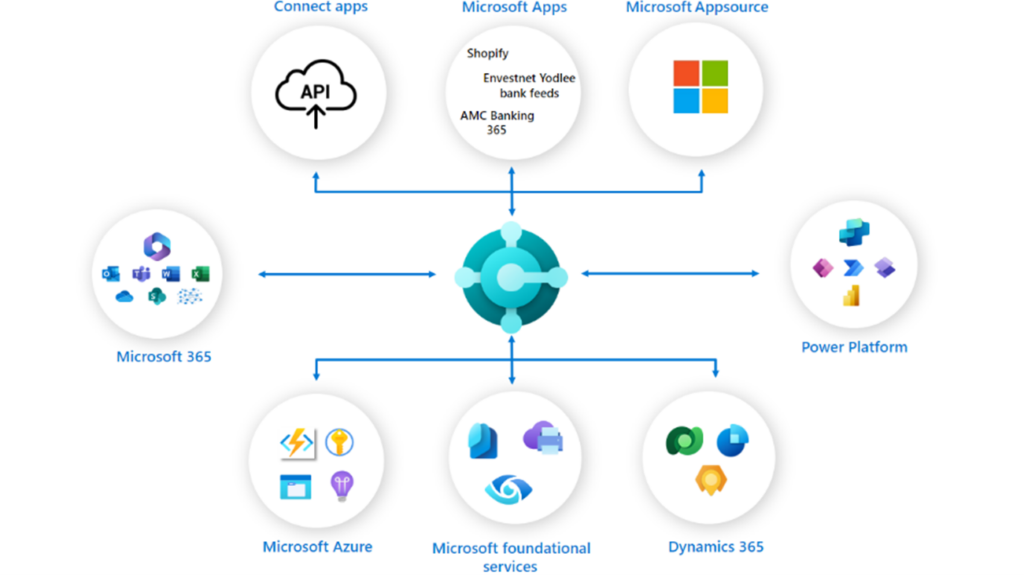Microsoft Dynamics 365 Business Central provides food and beverage manufacturers with powerful tools for efficient inventory management, supply chain optimization, and adaptability to shifting consumer demands. The comprehensive, cloud-based ERP solution brings together a range of business functions – from finance and operations to sales and customer service.
There are more compelling reasons to adopt Business Central as your enterprise resource planning (ERP) system: it’s a comprehensive, cost-effective, and customizable ERP that is secure, easy to deploy, and straightforward to use. Research conducted by Nucleus has demonstrated that users of Microsoft Dynamics 365 Business Central experience significant enhancements in productivity, reductions in operational costs, and greater business agility. According to feedback from Business Central customers, benefits include cost savings of up to $15 per invoice processed, a monthly time saving of up to 12 hours per user, and the ability to penetrate new markets up to four times faster than before.
But an especially noteworthy – but not often discussed – feature is its deep integration with Microsoft’s broader technology stack and productivity tools. Business Central’s power lies in its deep integration capabilities with other Microsoft products such as Outlook, Excel, and Teams, providing a seamless dataflow between applications.
This is a far cry from the experience of food and beverage manufacturers with a siloed collection of Microsoft, and non-Microsoft ERP tools. They are usually faced with redundant functionality, limited interoperability between tools, excessive costs, lost productivity and increased errors.
Let’s discuss just some of the ways Business Central works with the rest of the Microsoft technology stack.

Image source: Microsoft
Key Microsoft 365 Integrations
Excel and Business Central: Direct integration allows users to export data lists such as customer orders or invoices into Excel for advanced data manipulation and analysis. This feature supports both viewing and editable interactions, enabling users to analyze and update their data within a familiar tool and sync changes back to Business Central.
Outlook and Business Central: Integration with Outlook transforms customer and vendor communications by enabling direct interactions within emails. Users can access and manage Business Central data, such as customer details and financial documents, directly within Outlook, streamlining communication and enhancing data consistency across platforms.
Word and Business Central: Customize document layouts using Microsoft Word, then merge these layouts with Business Central data to generate professional documents for print or email distribution. This seamless integration simplifies document creation and ensures that all communications are both accurate and brand-consistent.
Enhanced Collaboration Tools
OneDrive and SharePoint: Business Central utilizes OneDrive for easy access and sharing of reports and documents, enabling collaborative review and edits in real-time via Excel for the web. Similarly, integration with SharePoint allows for robust document management and team collaboration across business functions.
Teams: The integration with Microsoft Teams connects team members directly to Business Central data, facilitating quick information sharing and decision-making within the collaborative environment of Teams.
Real-Time Insights with Power BI
Power BI transforms vast amounts of data into actionable insights and intuitive dashboards. This capability allows decision-makers to monitor key performance indicators in real-time, from production efficiency to sales and beyond.
The power of Power BI lies in its ability to provide comprehensive, data-driven insights that are easily accessible across devices. Whether on the factory floor or in the boardroom, stakeholders can access critical business metrics that inform strategic decisions, enhancing operational agility and strategic foresight.
Overcoming Integration Challenges
Harvest Food Solutions enhances Business Central’s capabilities, focusing on the unique challenges of the food and beverage industry. It ensures that critical functionalities such as inventory management, food safety, compliance, and recall readiness are not just integrated but are central to the ERP system. This specialized focus helps businesses manage the complexities associated with perishable goods, stringent regulatory requirements, and the high stakes of food safety.
The Microsoft Technology Stack: A Recipe for Success
Business Central and the Microsoft technology stack empower food and beverage businesses to navigate the complexities of the industry with greater ease and confidence, turning challenges into opportunities for growth and innovation. For companies looking to thrive in this dynamic sector, embracing a fully integrated system is not just a good strategy—it’s an essential one. Looking to see Harvest Food Solutions in action? Get in touch!










